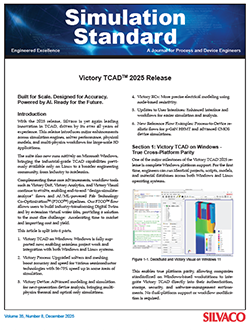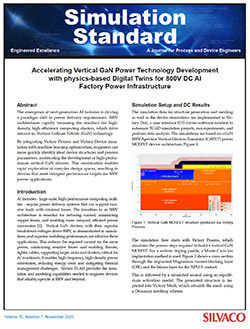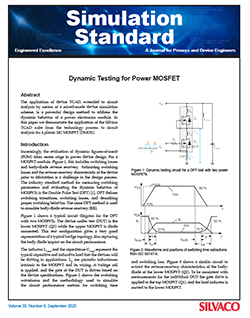Simulation Standard Technical Journal
A Journal for Process and Device Engineers

Victory TCAD 2025 Release
With the 2025 release, Silvaco is yet again leading innovation in TCAD, driven by its over 40 years of experience. This release introduces major enhancements across simulation engines, solver performance, physical models, and multi-physics workflows for large-scale 3D applications.

Accelerating Vertical GaN Power Technology Development with Physics-based Digital Twins for 800V DC AI Factory Power Infrastructure
In this paper we will discuss accelerating vertical GaN power technology development with physics-based Digital Twins for 800V DC AI factory power infrastructure.

Dynamic Testing for Power MOSFET
In this paper we demonstrate the application of the Silvaco TCAD suite from the technology process to circuit analysis for a planar SiC MOSFET (DMOS).
The Impedance Field and Small-Signal Noise
This is an introduction to the impedance field method and its application to the calculation of the small-signal noise in Victory Device.
Trajectory Replication in Monte Carlo Ion Implantation with Victory Process
This edition introduces trajectory replication in Victory Process Monte Carlo ion implantation, with a focus on:
- Reducing computation time by reusing ion paths in similar regions
- Maintaining physical accuracy while accelerating simulations
- Best-use cases and scenarios to avoid
- Achieving speed-ups of up to 10×
Victory Process Stress Simulation: Practical Workflows, Best Practices, and Recent Improvements
In this article, we will present application examples of stress analysis in Victory Process.

